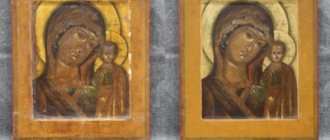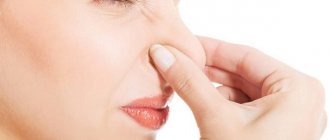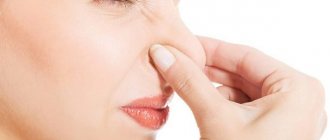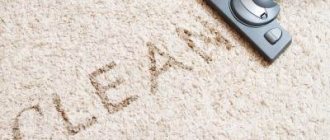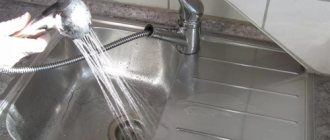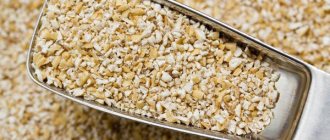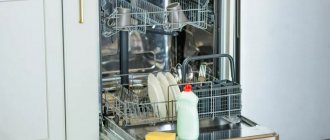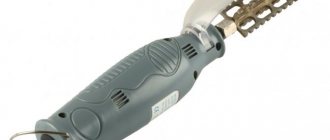How to clean brass at home?
You can clean brass with regular acetone: treat the contaminated surface with a cotton swab soaked in acetone. At home, you can clean brass using a more radical method. It involves using a solution consisting of water, ordinary salt and acetic acid.
Interesting materials:
How to summarize an essay? How does weather affect blood pressure? How did bookmarks appear? How did the phraseological unit appear from board to board? How did the monument to Peter the Great appear? How to show licenses in SAMP Mobile? How to show emotions in GTA V? How to paint a wooden front door? How does the sex of a child depend on the father? How to completely disable Google Assistant?
Cleaning icons made of different metals
Repairing an icon is not an easy task, but it is doable. To minimize the risk of new damage, home restoration should be carried out with the utmost care.
How to clean copper icons, as well as silver, gold and bronze:
- Tooth powder is great for cleaning copper coins and relics. Copper, gold and silver heirlooms are difficult to clean, especially if they have carved textures. For proper washing, special products are sold that are used to treat jewelry made of all kinds of metals. To clean copper products, use Goya tooth powder or paste.
- To make silver and gold images shine, you need to use alcohol and vodka, previously diluted. Specialists clean the icons with cotton swabs soaked in a solution. To check whether the prepared mixture will harm the relic, it is recommended to coat the area that is almost invisible. If the varnish or paint has not come off, you can safely wipe the product.
- There are combined icons, for example: wood and metal. In this case, barrel tomatoes and cranberries will help. In order not to spoil the image, washing should be done without haste and carefully. First, cranberries and sour tomatoes are applied to the metal, then the dirt begins to come off from the metal surface, and then it is wiped with a dry cloth. The procedure is carried out over and over again until all the dirt is washed away and the metal becomes light.
- The surface of the relic is well cleaned with ammonia. Take a regular brush, which is used by artists, and then the solution is applied to the entire surface of the icon. Its owner must wait some time and wipe the church item with a dry cloth. When finished, use a hairdryer to dry, but at the lowest power, since the flow of hot air can damage the image.
- Gold items are cleaned with acetic and citric acid. If the icons are made of bronze or copper, then the acid is slightly diluted with water. After cleaning the surface, you will need a dry cloth.
Experts categorically do not recommend washing church items with kitchen detergents. You should not use hard powders and so on, since the surface may be scratched during the washing process.
How to clean a brass samovar?
A beautiful samovar turns an ordinary tea party into a celebration. But often dirt appears on the sides and inside. Methods for cleaning them depend on the material of the device.
An alloy of copper and zinc is often used to create samovars due to their strength, aesthetic appearance, and ease of processing. With a long period of operation, old products become dull and become greasy. Household chemicals can ruin it, so you should make formulations from available products:
- A solution of ammonia (1 tsp) and water (1 l) helps.
- Yogurt without additives gently cleanses. It needs to be applied to the device, wait until it dries and rinse off.
- Moisten the samovar with vinegar and add salt. Rub the coating with a cloth dipped in vinegar.
Do not use abrasives on the device. After treatment, the outside should be polished with a dry cloth. It must be left in dry rooms. Excessive humidity causes dark spots to form.
Storage rules
Proper care will ensure long-term storage of family value. Therefore, in order to avoid having to restore the paintwork and wipe off soot from the icon, it is recommended to store relics only in the appropriate places and follow simple rules. Recommendations from experts on caring for icons:
- Lighted candles should be placed only at a distance of 20 cm from the image.
- As a rule, icons are installed in the corners of the room and far from radiators, window openings, and so on. In this case, mold will not occur, since air circulation will be constant.
- All churches have stained glass windows because the sun's rays slowly destroy the icons. Therefore, family valuables should be kept away from windows.
- Also, there must be a minimum concentration of moisture in the house or apartment. If it is high, then after a while a fungus will appear on the face.
- The paint coating on the front side cannot be treated with alcohol varnish.
- Lye and washing powders are not suitable for washing church supplies, especially for icons.
- Washing with water can lead to the destruction of the icon. In this case, the paintwork will appear with whitish spots. Such care will not lead to anything good.
- Dust is removed with a brush or soft cloth.
- If there are frequent temperature changes in the room where the icons are located, the paint on the icon will crack and the wood will swell. Loss of original appearance is guaranteed. Therefore, it is better to install the icons in another room or fix the problem.
- Flies crawling along the surface of the face leave “spots” (bulges) on it. They cannot be scraped off because they are partially absorbed into the paint layer and can fly off with the paint during mechanical cleaning. In this situation, only a restorer can help.
By following simple rules, the icon can be preserved not only by children, but also by grandchildren and great-grandchildren. If small cracks have formed in the image, you should urgently go to a church restorer or other experienced specialist. To get detailed advice, you should visit a church and get advice from experienced people. One of the duties of true believers is not only keeping the commandments, but also carefully storing icons and other sacred church utensils.
Source of the article: https://nashdom.life/mojka/kak-myt-ikony-v-domashnix-usloviyax
What should you not do during the procedure?
Recommendations for processing a brass product are related to its purpose. An example is the following points:
- Costume jewelry, figurines, and other decorations should not be treated with abrasive material. This is due to the fact that a fairly large number of scratches appear on the surface, which are difficult to get rid of.
- It is worth considering that citric acid is highly effective, but can seriously damage the treated coating. That is why such a substance is used taking into account all precautions.
- Brass is susceptible to scratches. That is why you need to be careful when carrying out work.
Result of careless cleaning
In addition, when using special cleaning products, you must follow the operating instructions. Some substances are highly aggressive.
Colorful coating
Images should be washed only with soft cloths: napkins and rags without coarse lint. Church experts advise washing icons in the following ways:
- A soap solution helps remove soot. But often such a procedure is not recommended; repeated wiping can damage the holy face. And this is the most valuable part of the icon.
- There is another recipe that perfectly removes soot: alcohol, egg yolk, turpentine ointment and cool water with a ratio of 2:1:2:5. The mixture is stirred until smooth. A cotton swab is soaked in it and the cleaning procedure is performed. When finished, the solution is wiped off with a dry cloth.
- To prevent paint peeling, you should use a simple recipe: take chicken yolk and boiled chilled water in a ratio of 1 to 5. Apply the mixture to the damaged layer with a cotton swab, wait 60 minutes, and then wipe the coating with a cloth. The process is repeated several times to bring the paint to a shiny state.
- Vegetable oil restores the color of the heirloom. You can use olive oil. It is enough to wipe your face monthly to form a thin protective layer on it. If this does not work, a church restorer will help.
Important! The water used to wash the icons is not poured into the sink or onto the paths. It should only be poured into the garden - in a place where people do not go. If you do otherwise, then, as the clergy say, it is a sin.
If cleaning icons on your own at home scares the owner, then it is better for him to resort to professional services. Incorrect procedures can further damage the coating.
Alloy care methods
Before you begin cleaning your brass, you must do the following:
- If parts or objects are coated with paints and varnishes, they must not be processed using aggressive agents. It is recommended to wipe with a cloth previously soaked in soapy water.
- Oxidized areas and highly complex contaminants are removed using products that do not contain abrasive particles. Before processing, it is necessary to check the edges of brass parts; brushes with soft bristles are used.
- Acetic, citric and hydrochloric acids quickly remove dirt and deposits on alloy objects. However, it is recommended to take precautions, sometimes substances can cause harm to brass products.
- Do not wash dishes made of this metal; as a result, they will lose their initial shine.
Cleaning and polishing brass
How to clean severe darkening?
Severe darkening can be cleaned using a variety of materials. The combination of lemon juice and a pinch of boiled salt is highly effective. Among the features of this method, we note the following points:
- Before cleaning, the surface is washed with clean water and then wiped with a dry cloth.
- If the surface layer is varnish, you will have to remove it. This is due to the fact that during long-term use of brass, plaque can form under the varnish.
- After preparing the product, you can begin cleaning. Lemon juice is mixed with table salt, thereby increasing the effectiveness of the resulting mixture.
Polished brass
A surface can only be cleaned until it shines using a combination of several methods. An example is that after applying the mixture, the surface is cleaned and treated with soft sandpaper. It is not recommended to use an abrasive that is too coarse, as this leads to deep scratches.
What is brass and where is it used?
Brass is an alloy of copper and zinc. The material contains elements such as manganese, tin, aluminum and lead particles, which change the characteristics and color shades of the metal. Zinc was discovered in the 16th century, but brass was discovered in ancient times. The metal was obtained by melting copper and zinc-containing ore.
When making the alloy, up to 30% zinc is added to the composition, but to improve technical characteristics, up to 50% metal is added. Brass practically does not wear out and is used in the manufacture of automotive spare parts, serpentine elements, heating radiators, as well as stamped parts and various accessories. Alloy brass is used for the production of aircraft, ships, watch parts and main pipes.
Using tombak (an alloy with a zinc content of no more than 10%) insignia is made. To protect elements from corrosion, cast brass is used. It is used to manufacture bearings, shut-off valves, and separators. Thanks to the properties of the alloy, compasses and heating radiators are produced. Cleaning of brass is carried out without the use of additional equipment and special products.
The metal is used in jewelry in the manufacture of costume jewelry, as well as counterfeit gold jewelry. The alloy content of up to 15% zinc and the addition of 5% aluminum allows you to obtain a material similar to precious. This condition is used when making frames for icons, as well as other items in churches.
Acetone
- Using soap. Soap solution removes soot well. But frequent use can lead to the face being partially or completely erased. As a result, the most valuable icons are lost.
- The yolk of a chicken egg, boiled chilled water, turpentine, and alcohol in a ratio of 1:5:2:2 will help get rid of soot. Mix the composition well and apply with a soft brush or cotton swab. Then wipe the paint layer with a dry cloth.
- How to properly restore an icon yourself if the paint layer begins to peel off? To do this, use 1 chicken egg yolk and 5 parts water. The emulsion is applied to the damaged areas and dried for 1 hour. This manipulation is repeated several times. Then you need to moisten the damaged areas with the same solution and press them against the board.
- Vegetable oil will help return the color to the icon. In the old days they used olive oil. They wipe the face with it once a month. Apply a thin layer.
Aerator key.
Traditional methods
- The aerator consists of a rubber gasket, a mesh filter and a clamp with which the structure is attached to the tap. This fastener is unscrewed with a key for aerators. This must be done carefully, since at this stage the filter may break, especially if it is made of plastic. If there is no special key, this can be done using pliers, having first wrapped the aerator in a piece of cloth so as not to damage the surface.
To preserve the relic in its pristine beauty for a long time, follow simple rules:
Methods for cleaning brass products
Regardless of the scope of use of brass metal, products equally require regular maintenance. In the household departments you can purchase specialized products or use traditional methods. Whatever brass item you own: a samovar, a chandelier or jewelry, the cleaning methods that we will tell you about will be suitable for each of them.
Soap + paste
Let's start with the simplest recipe. This method is an “ambulance” for brass products. You will need:
- liquid soap;
- toothpaste;
- medium hard brush.
Fill a basin with clean, warm water and add a couple drops of soap. Soak the brass product in the resulting solution. Leave for several hours. Then take a brush, put a small amount of toothpaste on it and start brushing. Finally, rinse the item under running water and wipe dry.
Acid + soda
This method is ideal if your product has been oxidized. You will need:
- oxalic acid (technical grade);
- baking soda;
- brush with thick bristles.
Apply acid to the entire surface of the brass product. Leave for a few minutes. During this time, you will see a slight darkening of the metal (don't be afraid, this is a natural reaction). Now take your brush and start scrubbing the item, paying special attention to any oxide stains on the surface. Then, while continuing to clean, apply a small amount of baking soda and let it sit for a while. Upon completion of the procedure, rinse the product thoroughly under running water.
We recommend protecting your hands with rubber gloves when working with oxalic acid.
Acid + water
This method also involves the use of oxalic acid. Add 20 g of acid powder to 1 liter of water and mix thoroughly. Place brass items in the resulting solution and hold them there for a while. Then you can start cleaning the metal with a brush.
Acetone
This method will help to cope with blackness on the surface of products. You will need:
- acetone;
- a piece of cotton fabric.
Apply acetone to the cloth and begin cleaning the metal. Blackness and oxide stains respond well to acetone, and you can easily clean the product. Please note that cleaning using this method should only be carried out in well-ventilated areas.
Common problems
It would seem that keeping sacred relics at home is very simple and nothing will happen to them, but this is not so. A hot or humid indoor climate can damage icons. Following gradual corrosion, the image of God or other saints will deteriorate, and the family value will fall into disrepair. Therefore, it is important not only to pray before the face, but also to properly care for it.
- in an excessively hot place, the plywood on which the image is written may become distorted;
- growing layers of dust;
- candles next to the icon can smoke it;
- cracking and falling off of the paint coating;
- High humidity can cause mold and mildew to appear.
Minor damage to the relic can be repaired with your own hands at home. But the peeling paint and deformation of the plywood are difficult to correct, so special restoration will be required in the church.
How to clean a bronze cross?
Cleaning procedure:
- Chicory powder is poured into a dry container.
- Add water to the container with the powder and mix with it until a mass is obtained that resembles the consistency of dough.
- The surface of a bronze object is treated with the resulting mixture and then cleaned with a brush.
- After cleaning is completed, the product is rinsed with water and dried.
Interesting materials:
Where is HammAli from? Where is Ibrahimovic from? Where is Yulia Vysotskaya from? Where is Lukashenko from? Where is Madonna from? Where is Navai from? Where does rye come from? Where does the wolf come from? Where is Volodin from? Where is Shaggy from?
Removing varnish
In some cases, damage to the varnish causes the material underneath to become darker and lose its color. It is removed in a variety of ways, the choice is made depending on the characteristics of the alloy. You can remove the topcoat as follows:
- The varnish is removed with hot water. When the surface is exposed to high temperatures, the metal begins to expand; after cooling, the varnish comes off.
- The product to be treated can be placed in boiling water, but for no more than 3 minutes.
- If home methods do not help with removing varnish, it is recommended to purchase special solvents. They are found on sale in special stores.
- If the varnish layer is too thick, remove it with an abrasive material. The movement should be made in one direction and without strong pressure. This recommendation is due to the fact that too much mechanical stress can lead to deep scratches.
After removing the varnish, the brass is cleaned of plaque and dirt. For this, various special means and folk methods can be used.
